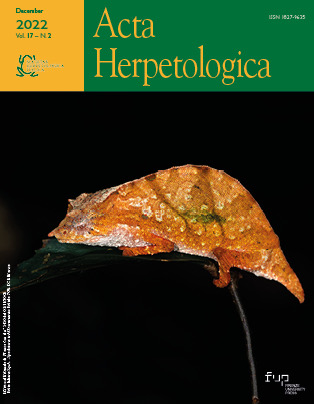One site, three species, three stories: syntopy of geckoes Euleptes europaea (Gené, 1839), Hemidactylus turcicus (Linnaeus, 1758), Tarentola mauritanica (Linnaeus, 1758) in a coastal area of southern Tuscany (central Italy)
Published 2022-08-03
Keywords
- Syntopy,
- geckoes,
- Tarentola,
- Hemidactylus,
- Euleptes
- central Italy ...More
How to Cite
Abstract
Ecological aspects of syntopic geckoes were rarely addressed in the Mediterranean basin. We reported basic information on habitat use, and activity patterns of three species found in syntopy in Cala Violina site (divided in three subareas), a highly touristic beach located in southern Tuscany, central Italy, during 2009-2010. The most abundant species at first capture is Hemidactylus turcicus (94 individuals), while Tarentola mauritanica and Euleptes europaea are less represented (28 animals in both cases). Total captures and recaptures were 175. Sex ratio did not differ from 1:1 in all the species, nor sexes of adults did differ in size. Ambient temperatures did not differ in T. mauritanica and E. europaea, while were different in H. turcicus. Despite the humidity of capture sites did not vary among species, we recorded the highest number of E. europaea at 95% and H. turcicus at 62% humidity. Wind influenced negatively T. mauritanica and H. turcicus presence, not on E. europaea. Higher observation rate took place between 21:00 and 22:00. After 23:00, only Euleptes was active. Height from the ground was different only in H. turcicus. General Linear Models showed that interaction substrate-height at capture was important for Euleptes, not for the other two species. Along the area, E. europaea was more concentrated in the northern patch, while T. mauritanica and H. turcicus distributed more homogeneously. We suggest limitation of human presence for conservation purposes.






